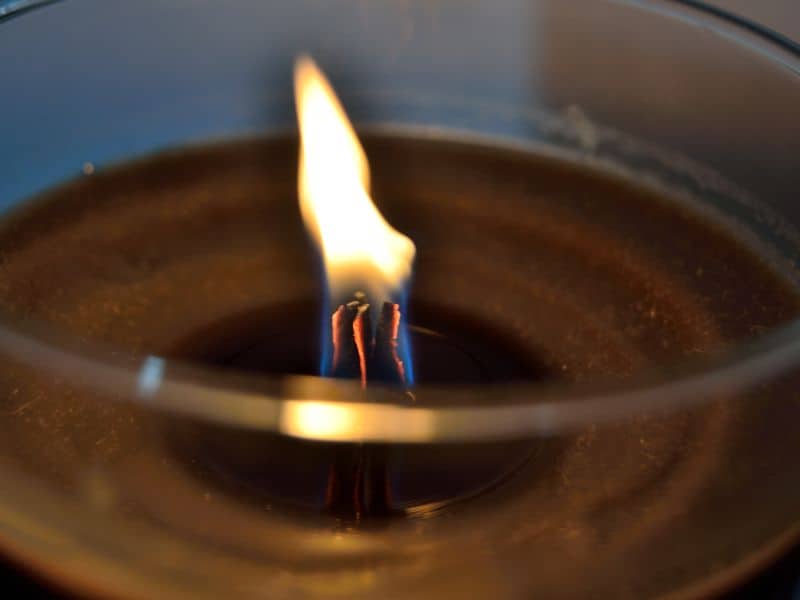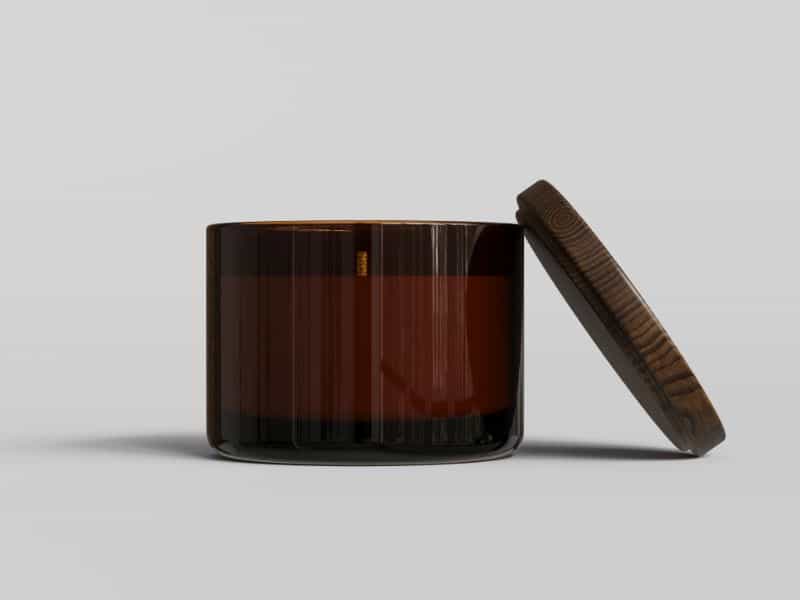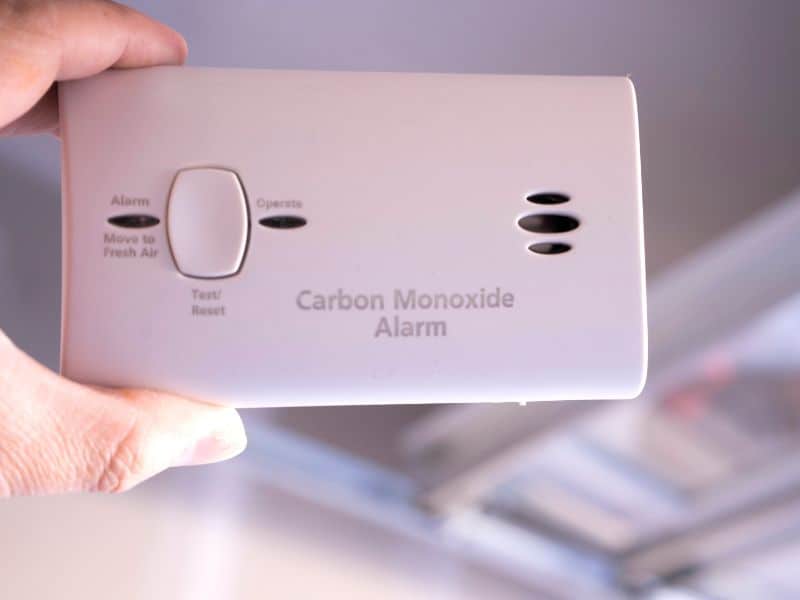Have you ever lit a candle in your home and noticed the flame flickering without any sign of wind or draft? In this blog post, we will explore the science behind why candles flicker even when there is no breeze present. We will also discuss ways to prevent it from happening so that you can enjoy your candlelight without interruption. So, why do candles flicker when there is no wind?
Candles flicker without wind due to the combustion process creating air currents and temperature variations, impurities in the wax, impurities in the wick, or when the flame is getting too much or too little oxygen that disturbs the flame.
When the candle burns, it produces heated air molecules that rise and create currents of air around the flame. These currents of air can cause the flame to become turbulent and flicker.
Let’s take a closer look at this issue.
Reasons Behind Candle Flickering With No Wind
Candles flicker without wind because of several factors, including the heat emitted from the flame, cool air from the ceiling or floor, moving air from fans or air conditioners, changes in atmospheric pressure or humidity levels, and drafts from windows and doors.
When a candle burns, it produces hot gases that rise up and create airflow around the flame. Cool air then rushes in to replace the hot gases creating flickering flames.
Changes in atmospheric pressure or humidity levels can also cause candles to flicker. When there are significant changes in these parameters, they can affect the way the flame burns and lead to flickering. Drafts from windows and doors can cause uneven burning of candles, leading to flickering flames.
To minimize flickering, try burning candles in draft-free environments with consistent temperature and humidity levels.
Wick Quality and Placement
There are several reasons why candles may flicker even in the absence of wind. One major factor is the quality and placement of the wick. A poorly made or placed wick can cause uneven burning and an uneven wax pool, which in turn causes the flame to flicker.
The size of the wick also plays a role, as too small of a wick can lead to a weak flame that is prone to flickering. Even if the wick is properly made and placed, drafts from nearby fans or air conditioning vents can cause candles to flicker.
Therefore, it’s important to take care when placing candles near any sources of airflow, even if there is no noticeable wind.
Wax Impurities and Moisture
Candles that flicker without wind can be caused by several factors, including wax impurities, moisture in the air, or drafts. When wax contains impurities, it can burn unevenly and create an inconsistent flame.
High levels of moisture in the air can also cause candles to flicker as they struggle to vaporize the moisture before they can burn.
Another reason for candle flickering is drafts and air currents. These disturbances can disrupt the flow of oxygen to the wick and cause the flame to flicker. To prevent this from happening, it’s important to keep candles away from open windows or doors and other sources of moving air.
Incorrect Candle Storage
Candles can flicker without wind for a variety of reasons. One common cause is incorrect candle storage, such as storing candles in overly warm or humid environments. This can cause the wax to melt and the candle to flicker.
Additionally, using an incorrect type of wick, such as one that is too thick or too thin, can also cause candles to flicker.
Drafts from open windows or air-conditioning vents can also cause candle flames to flicker, even without wind. The type of wax used and its temperature can also play a role in causing candles to flicker.
For example, paraffin wax typically has a lower melting point than beeswax and soy wax, making it more prone to flickering. By understanding these factors, you can better prevent your candles from flickering and enjoy a more enjoyable ambiance in your home.
The Flame Itself
The flickering of a candle flame is caused by the movement of air molecules around it. Even in the absence of wind, there can be air currents that will cause the flame to flicker.
However, the shape and size of the wick can also influence the swaying of a candle flame. A larger or thicker wick will create more flickering compared to a smaller or thinner one.
Another factor that affects candle flickering is the burning rate of the wax. If the wax melts too quickly, then it will produce more smoke and cause the flame to move around. It’s important to note that these subtle movements of a candle flame are normal and natural, and they contribute to its beauty and charm.
Understanding the reasons behind candle flickering without wind can help you appreciate this timeless tradition even more.
Manufacturing Defects
Candles are known for their soothing, flickering light, but what causes them to flicker without wind? One reason could be manufacturing defects. The wick of the candle may be too thick, or the wax may be too soft, causing fluctuations in the flame.
Additionally, the size of the flame can also impact how much a candle flickers. Heat from nearby sources such as a light bulb or heater can also cause a candle to flicker without wind. Finally, drafts in the room can also cause flickering even if there is no visible wind.
Drafts and Air Currents
Candles can flicker without wind due to a variety of reasons. One common cause is drafts and air currents, which can disturb the flame and cause it to flicker. Other factors that can affect a candle’s flame include the amount of oxygen available, the temperature of the room, and nearby heat sources such as ovens or radiators.
The wick of a candle can also play a role in how it burns. If the wick is too long or unevenly trimmed, it may cause the flame to flicker or even go out. Additionally, the type of wax used and any additives included in making candles can create different burning results.
How To Stop Candle Flickering When There Is No Wind
Candles are a great source of light, but sometimes the flickering can be annoying. If you want to stop your candles from flickering when there is no wind, there are a few things you can do.
Trim the wick:
If the wick is too long, it can create an uneven burn and cause the flame to flicker. Trim the wick to ¼ inch before lighting the candle.
Use a candle snuffer
Blowing out the candle can cause air currents that disturb the flame. Instead, use a candle snuffer to extinguish the flame gently.
Keep the candle away from drafts
Even without wind, drafts from air conditioning or open windows can cause the flame to flicker. Place the candle in a draft-free area.
Use a heavier candle holder
A lightweight candle holder can vibrate or move, causing the flame to flicker. Use a heavier, more stable holder to keep the candle steady.
Choose the right size wick
If the wick is too small for the candle, it can create a weak flame that flickers. Use the recommended wick size for the candle.
Use a candle warmer
If you prefer the scent of a candle but don’t want the flickering flame, consider using a candle warmer. This device gently heats the wax and releases the fragrance without a flame.
By following these simple steps, you can enjoy the warm glow of your candle without any distracting flickering.
Safety Concerns Regarding Flickering Candles
Flickering candles can be a safety hazard, especially when left unattended.
Fire hazard
Flickering candles can ignite nearby objects, such as curtains, papers, or other flammable materials. Always keep candles away from anything that could catch fire.
Burns
Flickering candles can cause wax to drip and create a pool of hot liquid, which can burn skin or damage surfaces. Always place candles on a stable, heat-resistant surface and keep them out of reach of children and pets.
Carbon monoxide poisoning
Burning candles in an enclosed space can produce carbon monoxide, a colorless and odorless gas that can be lethal in high concentrations. Always use candles in a well-ventilated area and never leave them burning unattended.
A flickering candle may begin to produce soot or smoke and if you have this candle burning in the next room or while you are sleeping it can become a safety hazard. Over time the room will begin to fill with soot and smoke and if you are sleeping you will begin to breathe it in. Every year people end up in the hospital from this exact situation.
Frequently Asked Questions
Flickering can be caused by a variety of things, including manufacturing defects, drafts and air currents, temperature changes, and nearby heat sources.
Check the wick size and trim it to the appropriate length. Place your candle in a draft-free area and replace it with one that has a thicker wax blend.
Flickering candles can be a safety hazard, especially when left unattended. To ensure the safety of your home, check the wick size and choose the right wax for your candle.
Conclusion
In conclusion, there are various factors that can cause candles to flicker without wind. The wick of a candle is one of the primary causes due to irregular burning. Changes in air temperature and pressure can also lead to flickering without wind. Larger diameter candles tend to flicker more than smaller ones, and burning multiple candles close together can create convection currents that cause flickering. Understanding these factors can help you better control the environment around your candles and enjoy their warm glow without any unexpected flickers.






